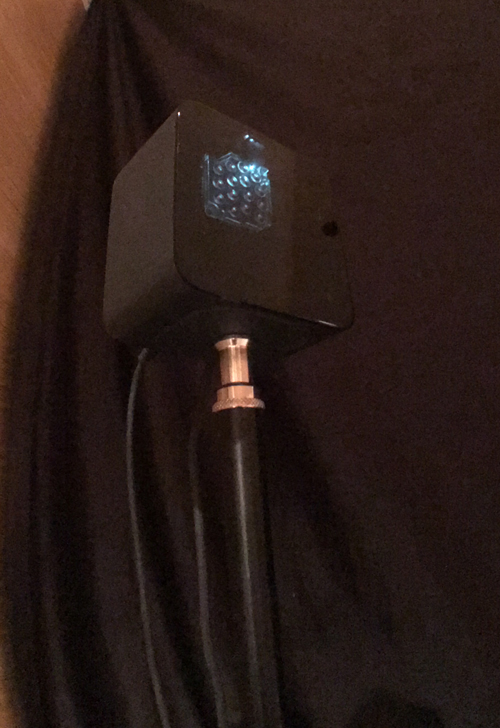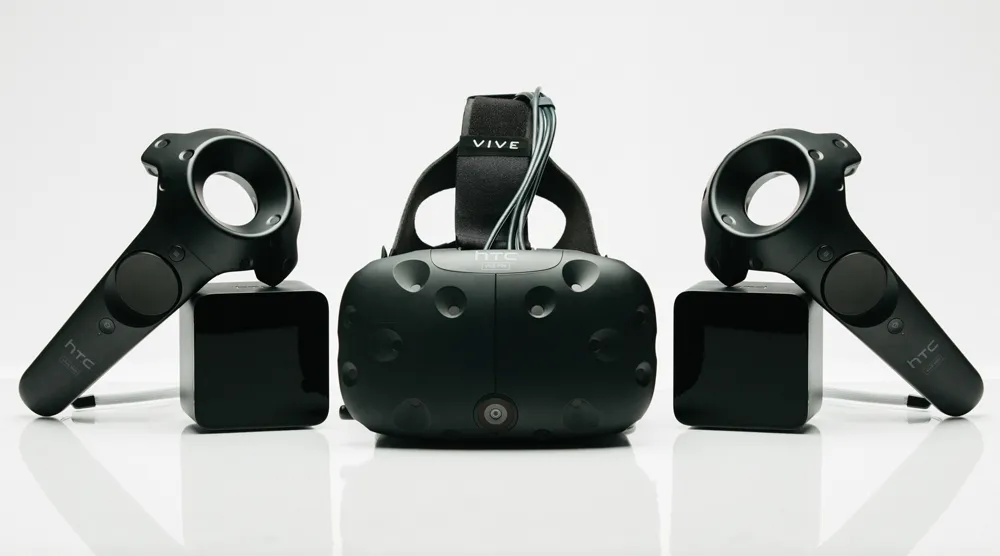The second HTC VR developer kit is officially called Vive Pre and, confirming a leak that it features a single front-facing camera, the headset can show a kind of augmented reality view of the surrounding room at the click of a button on the redesigned, lighter-weight controllers.
Read More: Hands on with the HTC Vive Pre
Vive Pre is also much smaller and lighter than the original Vive kit released last year with crisper visuals provided by improved optics. The camera enhances the room-scale focus of Vive by providing an overlay of real-world surroundings when approaching a wall for more confident walk-around VR. If you wanted to grab a glass of water while inside VR you could tap a button on the controller, see a representation of the real world, walk over and pick up the glass to take a drink. Put it back down, then press the button again and go back to your VR experience without ever taking the headset off. If you got tired and wanted to sit down in a chair across the room and switch to playing a seated experience like space-fighter ‘Elite: Dangerous” you could do that too without fully breaking immersion.
[slideshow_deploy id=’11948’]
“We have a low angled, wide-view camera. The purpose of the front-facing camera is kind of two-fold, there’s a convenience aspect to it. We realized that when someone is going be in VR for an extended period of time there’s certain things you just need to be able to do, like reach down and work with your keyboard, pick up a drink, if somebody comes into the room to talk to you,” said Ryan Hoopingarner, Director of Product Marketing at HTC. “The other component to the front-facing camera is that information is available to all of our developers so we’re really interested to see what comes of that.”
While the technology doesn’t currently actively detect pets or people that walk into a room or warn about possible collisions with those moving objects, it’s possible some functionality could still change before the planned ship date in April. Developers might also use the features for interesting mixed reality experiences.
 The updated controllers charge using standard micro USB and are said to provide more than four hours of runtime on a single charge while the laser “lighthouse” base stations are more compact, run quieter and are said to track better.
The updated controllers charge using standard micro USB and are said to provide more than four hours of runtime on a single charge while the laser “lighthouse” base stations are more compact, run quieter and are said to track better.
HTC and Valve are planning to make 7,000 units available to developers with content showcases planned to highlight Vive experiences ahead of planned February pre-orders and shipping in April.




























